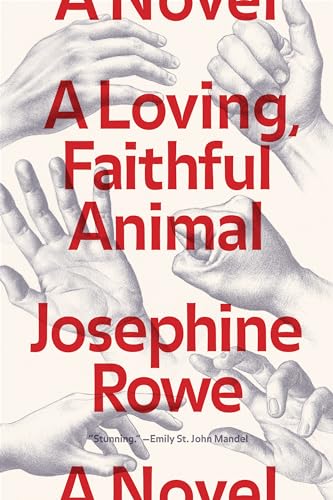I’ve had a good year in reading, mostly because I’ve been traveling a lot and have developed a habit of reading obsessively in airports and airplanes. In January I read Josephine Rowe’s debut novel, A Loving, Faithful Animal, and Robert Seethaler’s A Whole Life, and was deeply moved by both. Both are little marvels of elegance and concision.

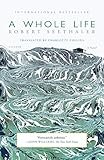 Three of the five books I read in February warranted a little star next to the title in the notebook where I keep track of books I’ve read. Javier Marías’s A Heart So White is essentially a ghost story, except that thing that’s haunted isn’t a house or a landscape or even particularly a person; the thing that’s haunted is somehow the entire institution of marriage, and I’m still unsettled by the thought of it. I think that Ali Smith’s Autumn is her best work to date, and I’ve loved almost all of them. Autumn is utterly of this era, the first post-Brexit novel I’ve read, and yet I think it has a rare quality of timelessness, in that I am certain I’ll still find it moving and fascinating 20 years from now. Dan Chaon’s Ill Will is the creepiest book I’ve ever read, and I mean that as a compliment. It’s the kind of book that grabs you by the throat.
Three of the five books I read in February warranted a little star next to the title in the notebook where I keep track of books I’ve read. Javier Marías’s A Heart So White is essentially a ghost story, except that thing that’s haunted isn’t a house or a landscape or even particularly a person; the thing that’s haunted is somehow the entire institution of marriage, and I’m still unsettled by the thought of it. I think that Ali Smith’s Autumn is her best work to date, and I’ve loved almost all of them. Autumn is utterly of this era, the first post-Brexit novel I’ve read, and yet I think it has a rare quality of timelessness, in that I am certain I’ll still find it moving and fascinating 20 years from now. Dan Chaon’s Ill Will is the creepiest book I’ve ever read, and I mean that as a compliment. It’s the kind of book that grabs you by the throat.


 My favorite book of March was Sarah Manguso’s 300 Arguments. It’s slim and deadly. Her idea was that it might be interesting to write a book comprised solely of the quotable sentences that one underlines in more ordinary books. I found this book quite useful. When one of my European publishers sent me a proposed jacket image over the summer that involved a young woman strutting down a post-apocalyptic road with a come-hither look, dressed in a bustier and form-fitting jean shorts, I sent them this section from 300 Arguments:
My favorite book of March was Sarah Manguso’s 300 Arguments. It’s slim and deadly. Her idea was that it might be interesting to write a book comprised solely of the quotable sentences that one underlines in more ordinary books. I found this book quite useful. When one of my European publishers sent me a proposed jacket image over the summer that involved a young woman strutting down a post-apocalyptic road with a come-hither look, dressed in a bustier and form-fitting jean shorts, I sent them this section from 300 Arguments:
After I submitted the final draft of my book about a train-track suicide, the art department produced sketches for my book cover: a needle and a long skein of red thread; a length of fluffy pinkish lace; a yellow hand mirror lying on a patch of green grass. I gave my editor a note for the designers, and the next day they delivered a perfect cover design: a photograph of the book’s subject, a man sitting on a train. This was the note: Pretend this book was written by a man.
(My publisher responded with the same jacket image, except with the girl Photoshopped out, so that the image was just an empty landscape. Fine.)

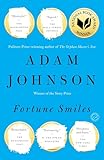
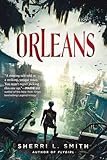 In April I read and loved Sherri L. Smith’s Orleans. I don’t read much YA, but we were about to do an event together and it was a rare moment where I was a) doing an event with another author and b) actually had time to read said author’s book. It’s a devastating and beautifully written book. The imagery stays with me.
In April I read and loved Sherri L. Smith’s Orleans. I don’t read much YA, but we were about to do an event together and it was a rare moment where I was a) doing an event with another author and b) actually had time to read said author’s book. It’s a devastating and beautifully written book. The imagery stays with me.
My favorite book of May was Adam Johnson’s short story collection Fortune Smiles, which includes one of the best ghost stories I’ve ever read. I spent a pleasurable July reading everything ever published by Nicole Krauss, in order to familiarize myself with her body of work before I reviewed her spectacular Forest Dark for the Guardian. August was unremarkable, book-wise, but in September I read Nick Harkaway’s wonderful Gnomon, and then James Smythe’s gorgeous and haunting I Still Dream the month after that. Gnomon and I Still Dream are in an AI-paranoia genre that I’ve been seeing more and more frequently, with plots wherein the nature of reality is slippery.
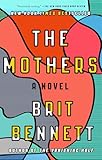
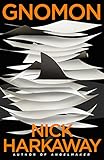
 As I write this, November isn’t over yet, but the books that have most impressed me this month are Shirley Jackson’s Hangsaman and Brit Bennett’s The Mothers. The novels are in no way similar, except in their authors’ impeccable control over their material.
As I write this, November isn’t over yet, but the books that have most impressed me this month are Shirley Jackson’s Hangsaman and Brit Bennett’s The Mothers. The novels are in no way similar, except in their authors’ impeccable control over their material.
I’ve saved June for last, because in June I read Emil Ferris’s My Favorite Thing Is Monsters. I encountered the book in Montreal. I go to Montreal only under duress or when I think it will be especially helpful to my Quebec publisher, because I lived there 15 years ago, and living in that city as an Anglophone was so unpleasant that I fall into an automatic depression every time I return. People are nice to me now when I go there, no one spits at me on the street for speaking English the way that one guy did 15 years ago, I no longer see anti-English graffiti on the street, I speak French well enough now to order a coffee en français and therefore other customers in line don’t glare at me, I no longer have the kind of job where I need to worry about the Language Police, and I care much less about whether or not people like me than I did when I was 23, but one’s first impression of a place can be indelible.
 In the spring I was in Montreal for 24 hours, and at the hotel between interviews, my Quebec publisher showed me a book that pierced my haze of unhappiness: My Favorite Thing Is Monsters is a dazzling graphic novel, a story about growing up poor in 1960s Chicago that’s also a Weimar Republic horror story and a meditation on monsters, on what it means to be different, on family and love. “This book will change the genre,” my publisher said, and I don’t know enough about the graphic novel genre to confirm or deny this, but I do know that the book changed me. I left the city with the sense of having encountered something truly extraordinary. Sometimes you read a book and you think, Oh. This is what a book can be.
In the spring I was in Montreal for 24 hours, and at the hotel between interviews, my Quebec publisher showed me a book that pierced my haze of unhappiness: My Favorite Thing Is Monsters is a dazzling graphic novel, a story about growing up poor in 1960s Chicago that’s also a Weimar Republic horror story and a meditation on monsters, on what it means to be different, on family and love. “This book will change the genre,” my publisher said, and I don’t know enough about the graphic novel genre to confirm or deny this, but I do know that the book changed me. I left the city with the sense of having encountered something truly extraordinary. Sometimes you read a book and you think, Oh. This is what a book can be.
More from A Year in Reading 2017
Don’t miss: A Year in Reading 2016, 2015, 2014, 2013, 2012, 2011, 2010, 2009, 2008, 2007, 2006, 2005
